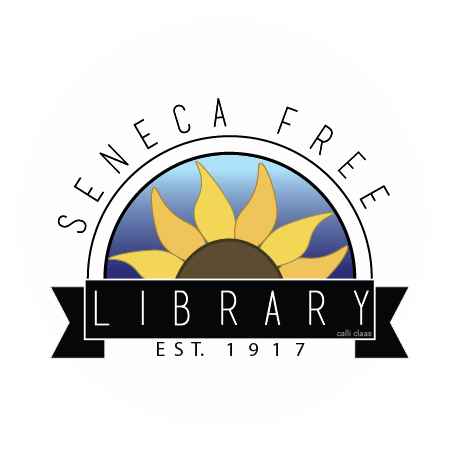December Brings the Gift of Gaming to Library D&D!
Dungeons and Dragons is an interactive storytelling game in which a group of players collaborate with a lead storyteller (referred to as the Game or Dungeon Master) to navigate and explore the world, people, creatures, and scenarios that they encounter during the game. The story and action are supplemented with dice rolls to provide a sense of luck and variance commonly found in table top and board games.
Library D&D returns in December with a fresh scenario and a special themed session! Call 785-336-2377 or drop in at the desk to register and get more information.
We’re playing Level 4 Characters for this event. Returning players, please update your character sheets accordingly and check your character inventories! Thanks!
Our numbers are growing and we’re looking at potentially expanding our adult group to a second session! But to do this, we need to know when the best day and time to hold this session might be. If you’ve been waiting in the wings for a new opportunity to open up or are freshly interested in joining us, call 785-336-2377 or e-mail Chad at cjones@senecafreelibrary.org. We’ve been having a ton of fun in our current groups and we look forward to meeting you or getting together with you again more regularly!
LIBRARY D&D in October 2025
| “ONE-SHOT” GAME (TEEN) | Wednesday, December 17 | 3:30 P – 6:30 P |
| “ONE-SHOT” GAME (ADULT) | Friday, December 19 | 5:00 P – 8:00 P |
PROGRAM DESCRIPTIONS:
In December:
One-Shot Game (Teen/Adult): A game experience with a clear start and end to a short storyline designed to be completed in a single gaming session (usually 2-3 hours). Premade characters will be available to choose from or characters made in our Character Building 101 session may be used. This program had enough interest to divide into Teen and Adult groups as indicated in the schedule. Dice will be available to borrow, or you may bring your own! (Just be sure to have a full 7 piece polyhedral set: d20, d12, d%, d10, D8, D6, D4, available through Amazon, select dice vendors, or your favorite gaming and hobby stores!)
Available Programs for Future Events:
Basic Intro to D&D: This program is designed for beginning players or those who have been away from the table for a while and just want a refresher course. Find out what Dungeons and Dragons is (and what it isn’t), how it’s played, and what you need to join or start your own game. Simplified premade characters will be provided to participate in a quick play demonstration. (Due to scheduling constraints, this will be a mixed Teens and Adults Group.)
Character Building 101: This is a basic introduction to character building using the D&D 2024 rules set. We will cover Ability Scores and the three primary methods of generating them, Skills and Proficiencies and how to use them, Classes, Species (formerly Races), and, most importantly, how to go from a character idea to a game-ready character sheet. This session will end in participants having a pen-and-paper 1st level character sheet that will be usable in future library events and most standard D&D groups. (Due to scheduling constraints, this will be a mixed Teens and Adults Group.)
Campaign Play (Teen/Adult Groups): A game style that follows the same group of player characters as they adventure through an on-going story (or multiple story arcs) across multiple play sessions. This game style is less ideal for those just getting started or who are eager to try a variety of character types or classes. Due to scheduling constraints, a campaign is likely to be limited to occurring once a month and will most likely take the place of the One-Shot games for the duration of the campaign.
DM Boot Camp: The dice are calling and you’ve gathered your allies, but somebody has to actually run the game! Will you answer the call to run it all? Let us help you get your footing as we go over the basics of what goes on behind the DM Screen, offer tips on how to build encounters, and suggest some “DM Does and Don’ts” that might make your games a little bit smoother and hopefully a lot more fun for you and your players. (Due to scheduling constraints, this will be a mixed Teens and Adults Group.)

Thank you for your interest in Library D&D! If you have any questions about the program or are interested in participating, feel free to contact us at 785-336-2377 or email us at librarian@senecafreelibrary.org. You can also visit with us directly at the circulation desk during regular operating hours!



